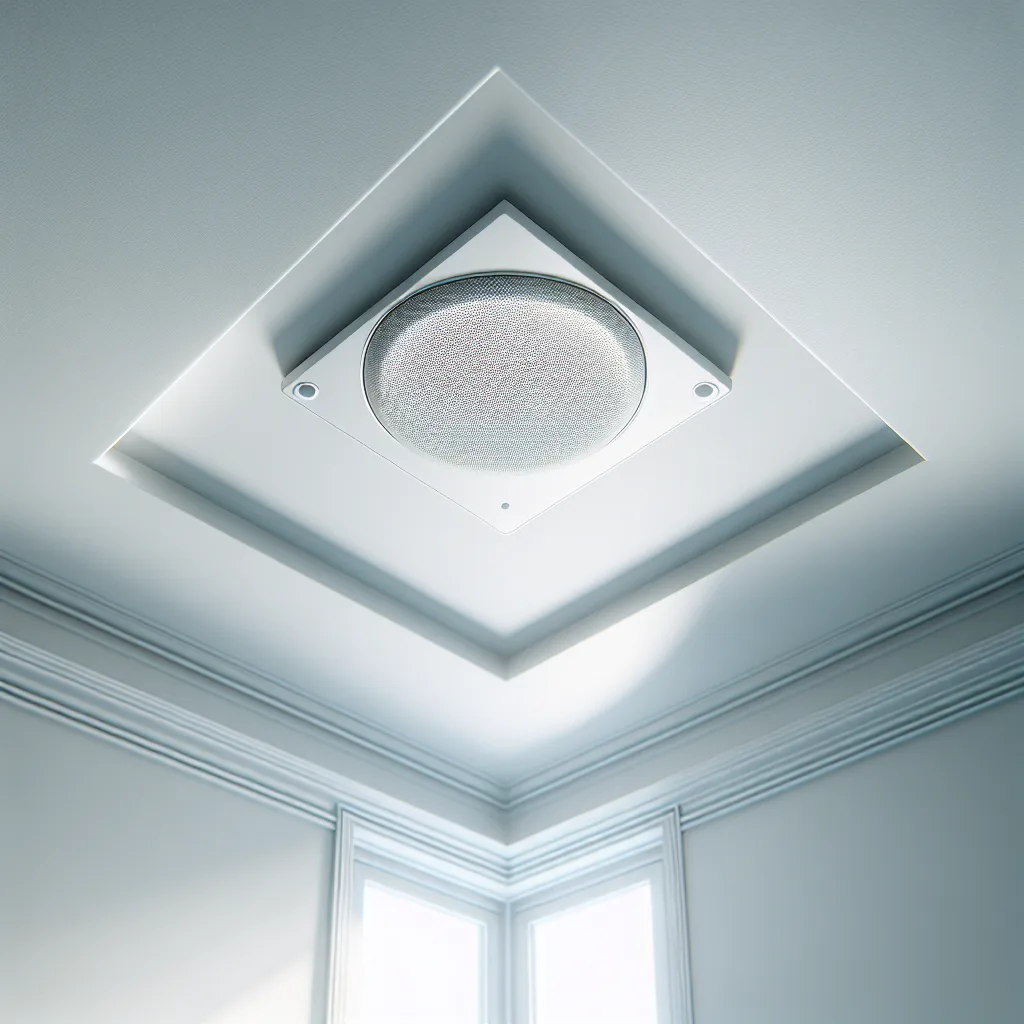Struggling with shallow ceiling cavities for your speakers? Learn how to find the best low-profile ceiling speakers that deliver great sound without needing deep holes.
So, you’ve got this perfect spot picked out for ceiling speakers. You can already imagine the sound filling the room. You cut the hole, grab your brand new speakers, and… they don’t fit. The hole is deep enough, but there’s a ceiling joist, a pipe, or some other obstruction in the way. Suddenly, your weekend project just got a lot more complicated.
I’ve been there. It’s a frustrating moment when you realize you only have a few inches of clearance to work with. My first thought was, “Well, so much for that idea.” I had a set of awesome Sonos speakers that needed a good 6 inches of depth, but my ceiling only offered about 4 inches before hitting a stubborn truss.
But don’t give up and patch that hole just yet. It turns out this is a pretty common problem, especially in older homes or condos with complex construction. The good news is that manufacturers know this, and there’s a whole category of speakers made for this exact situation: low-profile or shallow-mount ceiling speakers.
What to Look for in a Low-Profile Speaker
Finding the right speaker isn’t just about depth. You’re trying to solve a space problem without creating a sound problem. Here’s what I learned to look for.
1. Check the Mounting Depth (Obviously)
This is the most critical spec. Speaker manufacturers will always list the required mounting depth. Don’t just look at the number; give yourself a little wiggle room. If you have exactly 4 inches of clearance, look for a speaker that needs 3.75 inches or less. This just makes the installation process smoother and less stressful. You don’t want to be fighting to squeeze it in.
2. Don’t Sacrifice Sound Quality
You might think a slimmer speaker means weaker sound. That can be true for some of the ultra-cheap options, but many reputable brands have put serious engineering into their low-profile models. They use clever designs, like offset woofers and high-quality materials, to produce rich sound from a compact form factor.
Look for brands known for audio quality, not just their space-saving designs. Brands like Polk Audio, Klipsch, and Monitor Audio all offer excellent shallow-mount options that sound fantastic.
3. Consider the Speaker Size
You mentioned you were cutting holes for 8-inch speakers. That’s a great size for full-range sound. The challenge is that larger speakers often require more depth. However, you can still find 8-inch low-profile models.
If you’re struggling to find an 8-inch that fits, consider a high-quality 6.5-inch speaker instead. A top-tier 6.5-inch speaker can often outperform a mediocre 8-inch one. You might lose a tiny bit on the low-end bass, but you can always supplement with a subwoofer later if you feel it’s missing.
A Few Speaker Suggestions
I’m not here to sell you on one specific model, but I can share a few that I came across in my own search that are known for their shallow designs:
- Polk Audio RC60i or RC80i: These are popular for a reason. While not the absolute thinnest, they are known for fitting into tighter spaces than many competitors and delivering great sound for the price. Always double-check the specific depth requirements for the model you’re considering.
- Monitor Audio Slim Series: Monitor Audio has a “Slim” or “CS” series specifically designed for shallow cavities. They are well-regarded for their audio fidelity.
- Klipsch SlimLine Series: Klipsch is famous for its horn-loaded tweeters, which deliver crisp, clear highs. They have specific “SLM” (Slim) models that might be exactly what you need.
The most important thing you can do is measure your space carefully, then head to an audio equipment website and use their filters. You can almost always filter by mounting depth, which makes finding the right fit a whole lot easier.
So, don’t let a shallow ceiling stop you. The right speaker is out there. It just takes a little extra research to find the one that lets you have your cake and eat it too—great sound without having to tear out your ceiling.
